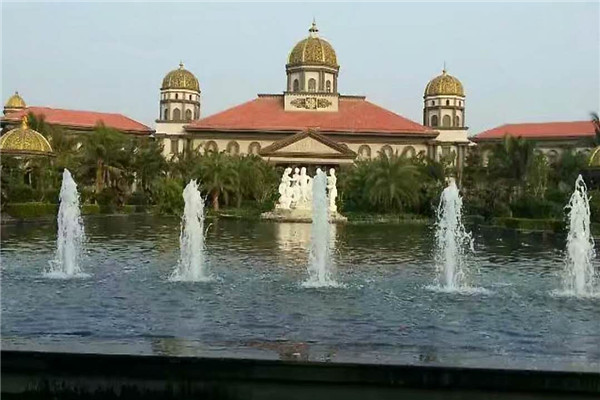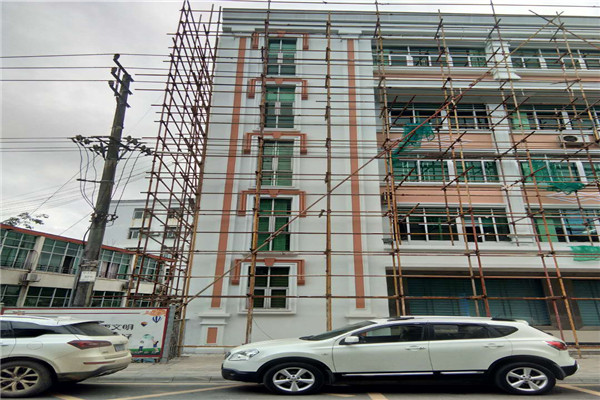Common architectural styles of GRC include European style, Mediterranean style, North American style, modern style, neoclassical style, new Chinese style, etc. In the practical application of new Chinese style buildings, the overall use of wood frame structure, or change the solid wood to concrete and wood like paint to reduce costs; Then, stone materials such as cornices, brackets, moldings, flower pots, etc. of the building will be replaced with GRC components sprayed with stone like paint, which can reduce a lot of material costs, reduce costs, and achieve design results. Hainan GRC components are applicable to the external walls of various styles of buildings. They are rich in shapes, exquisite and elegant. They provide a variety of creative choices for architectural designers. They can reflect the decorative style of buildings to a large extent, and are a new green decorative material.

According to the materials, rockeries can be divided into earth mountains, stone mountains and earth rock mountains (earth mountains and stone mountains and stone mountains and earth rock mountains); according to the construction method, rockeries can be divided into mountain building (block building earth mountains), mounding mountains (mountains are formed by mounding rocks), mountain chiseling (mountains are formed by digging natural rocks) and plastic mountains (traditionally molded by lime slurry, modern rockeries are molded by cement, brick, steel wire mesh, etc., referred to as plastic stone rockeries in the industry. The rockery can be divided into garden hill, hall hill, lou hill, pavilion hill, shufang hill, pool hill, indoor hill, wall hill and beast hill according to its location and use in the garden. The combination form of rockery is divided into mountain body and water body. Hainan Sculpture Mountains include peaks, ridges, peaks, ridges, valleys, gullies, hillocks, walls, rocks, hills, caves, docks, foothills, platforms, walkways, and plank roads; water bodies include springs, waterfalls, ponds, streams, streams, pools, rocks, and stilts. The landscape should be integrated to complement each other.

Sculpture art is a kind of plastic arts, also called sculpture, which is the general name of three creation methods of sculpture, carving and sculpture. It refers to the art of using various plastic materials (such as gypsum, resin, clay, etc.) or hard materials (such as wood, stone, metal, jade, agate, etc.) that can be carved or carved to create a visual and touchable artistic image with a certain space to reflect social life and express artists' aesthetic feelings, emotions, and ideals. It is diverse, so the law of development has different ups and downs. For example, the bronze ware manufacturing and decorative carving in the Yin and Zhou Dynasties in China were unmatched by future generations. The themes of the Han Dynasty's stone reliefs fully reflect the real life at that time. The sculptures in the Tang and Song dynasties certainly exceeded those in the Han Dynasty, but the works of the Tang and Song dynasties never fully reflected the reality as the Han Dynasty stone reliefs did. The handicraft industry and commerce in the Ming Dynasty were improved compared with those in the Tang and Song Dynasties, but few sculptures in the Ming Dynasty fully displayed the characteristics of each work as in the Song Dynasty. Although the sculpture of the Ming Dynasty is not as good as that of the Tang and Song Dynasties, other artistic achievements of the previous dynasties are naturally behind.

The round sculpture is completely three-dimensional, and the audience can enjoy it from all directions. For example, from the front, we can see the image of holding one's head high, clenching one's teeth, glaring at the enemy and being invincible. On the side, the audience can only see the right hand and left hand clenching their fists, showing Liu Hulan's inner anger through gestures, as well as her desire to smash the old world and wipe out the enemy. The back is relatively simple, and only the hair and clothes lines intertwined by the wind can be seen. In this way, the audience can see all aspects of Hainan sculpture from all angles, thus forming the overall sense of artistic image. The undulation of body is the main means of expression of sculpture, just as words are to literature, and color is to painting. The sculptor can boldly exaggerate, choose and combine the ups and downs of the body according to the needs of the theme content, without being restricted by the normal. The ups and downs of the body are the broad stage on which sculptors can gallop.

Sculpture refers to the ornamental and memorial objects that are carved to beautify the environment or for commemorative purposes, and have certain meanings, symbols or pictographs. Sculpture is a kind of plastic arts. It is also called sculpture, which is the general name of three creation methods: carving, carving and sculpture. It refers to the art of using various plastic materials (such as gypsum, resin, clay, etc.) or hard materials (such as wood, stone, metal, jade, agate, aluminum, glass fiber reinforced plastic, sandstone, copper, etc.) that can be carved or carved to create a visual and touchable artistic image with a certain space to reflect social life and express the artist's aesthetic feelings, emotions, and ideals. The lines can reduce the carved material through carving, while the plastic can achieve the purpose of artistic creation by adding plastic material.

The types of stone inscription monuments include monuments, memorial monuments, merit monuments, temple monuments, Dianzi monuments, mausoleum monuments, etc. Except for a few wordless steles, they are generally literal steles. Usually, characters are carved on the body of the stele, and some are accompanied by carved patterns. The pedestal and cover of the stele are mostly carved with decorations, birds, animals, flowers, and mascots. The cover of the stele of the imperial family is also carved with dragons and phoenixes. Marble is the most commonly used stone for making the stele, and sandstone and granite are also commonly used. Some of the steles are huge, and some of them become a group of steles. Suzhou Sculpture processing Stone books are written with stone instead of paper, and carved instead of pen, which is very ingenious. There are many famous works of stone tablet processing and stone calligraphy carving. For example, "Xi'an Forest of Steles" includes more than 3000 historical steles from Han Dynasty to Qing Dynasty. It is the largest collection of stone books in China. Together with the "Forest of Steles in Hanlin" under construction in Kaifeng, it can be said that it is a sea of steles, and it is a collection of calligraphies of regular script, line, grass, seal script, clerical script and Wei style by famous calligraphers of all ages. In addition to large carvings such as stone tablets and cliff carvings, there are also other stone carvings, such as mourning books in imperial tombs and modern fine carved small stone carvings, such as more than 100 Han Dynasty carvings excavated in the tomb of the prince of the Tang Dynasty Sculpture processing Price White jade mourning volume, six stone books of "Thirty six Strategies" carved with slate in modern Chengdu, a total of 26 pages and 1278 words, bound with eyeliner, each page is 2.2.6mm, which can be read.






